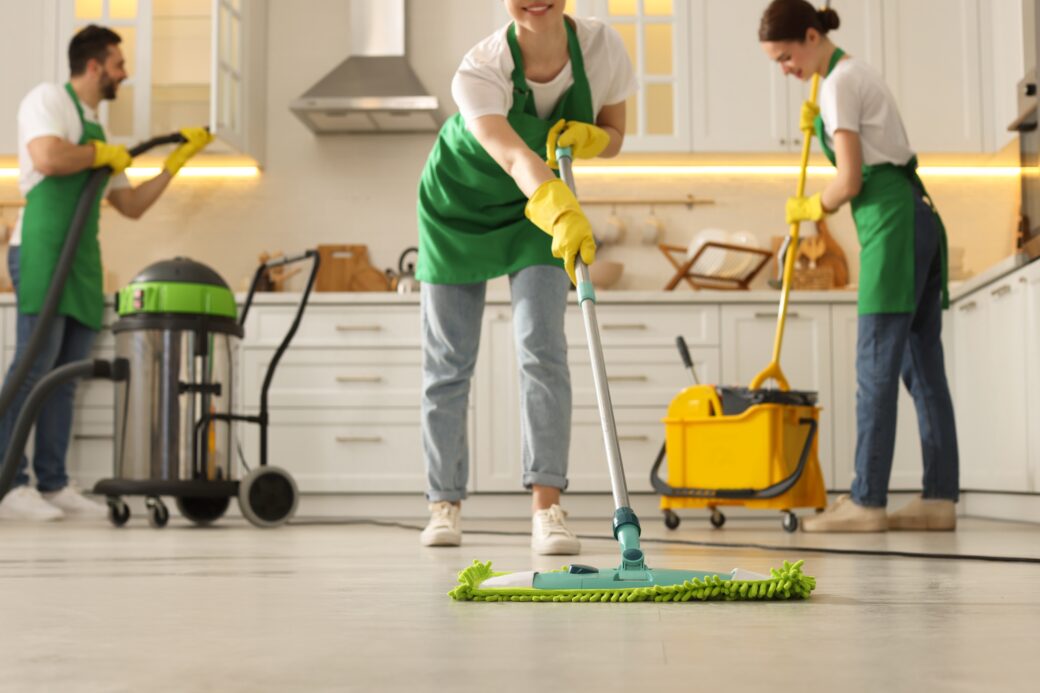The 7 basic cleaning types cover the essential approaches used for maintaining cleanliness and hygiene in different environments.
Here’s a breakdown…
Dusting
- Description – Removing dust and dirt from surfaces using cloths, brushes, or vacuums. This helps prevent dust buildup and allergens.
- Common Areas – Furniture, shelves, light fixtures, and baseboards.
Sweeping
- Description – Using a broom or sweeper to gather dirt, dust, and debris from floors. Sweeping is typically the first step before mopping or deep cleaning.
- Common Areas – Floors in kitchens, hallways, and public spaces.
Mopping
- Description – Using a mop and bucket (or automated scrubbers) to clean floors with water and cleaning solution. Mopping removes dirt, stains, and sticky residue from hard floors.
- Common Areas – Tile, vinyl, wood, and concrete floors.
Vacuuming
- Description – Using a vacuum cleaner to remove dirt, dust, and debris from carpets, rugs, and upholstered furniture. It’s essential for cleaning soft surfaces.
- Common Areas – Carpets, rugs, upholstered chairs, and sofas.
Wiping
- Description – Using cloths, wipes, or sponges to clean surfaces. Wiping is used for everyday messes like spills or food crumbs.
- Common Areas – Countertops, tables, appliances, and mirrors.
Scrubbing
- Description – Using a brush or abrasive pad to remove stubborn dirt, grime, or stains from surfaces. It’s more intensive than wiping.
- Common Areas – Bathroom surfaces, kitchen appliances, and outdoor furniture.
Disinfecting
- Description – Applying chemicals or sanitizers to kill bacteria, viruses, and other pathogens. Disinfection is critical for hygiene in high-touch areas.
- Common Areas – Restrooms, kitchens, doorknobs, and fitness equipment.
These basic cleaning methods are the foundation for keeping any environment tidy and safe. Depending on the area or level of cleanliness needed, they may be combined for more effective results.

Leave a Comment